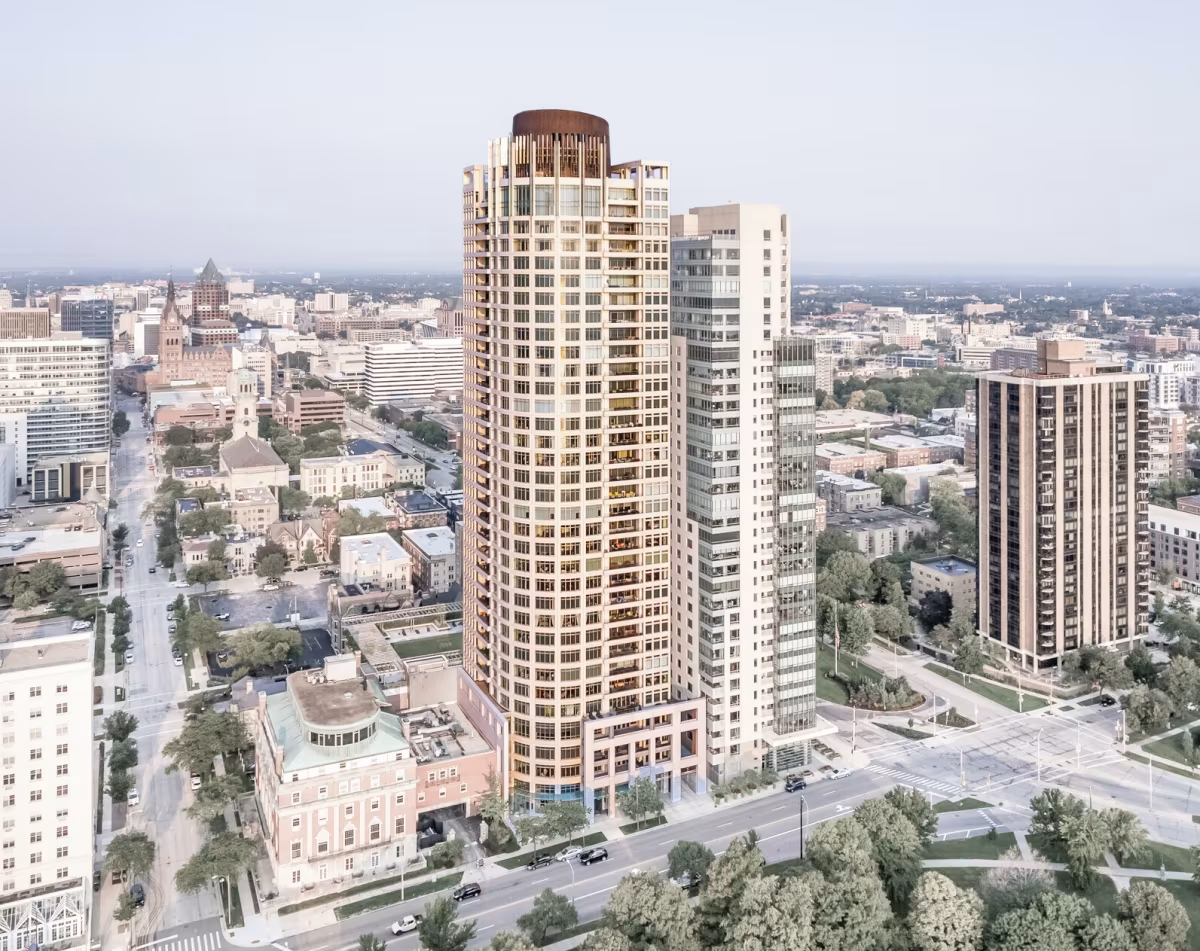University Club Tower vs Random House Tower


Comparing the University Club Tower and the Random House Tower is an interesting exercise, because even though they are located in different cities (Milwaukee, WI and New York, NY), both were designed by Skidmore, Owings & Merrill and finished within within 4 years of each other. This gives us the chance to see how the same architect's ideas were expressed in different urban contexts almost simultaneously.
Height & Size
The Random House Tower is clearly the larger tower of the two, both in terms of height and number of floors. It rises to 682ft (208m) with 52 floors above ground, while the University Club Tower reaches 446ft (136m) with 34 floors above ground.
Of course, each project may have faced different briefs or regulatory constraints, which we don't really know about and could also explain the outcome.
Architectural Style
Both the University Club Tower and the Random House Tower were designed in line with the aesthetic conventions of the Contemporary style.
At the time, this style was at the height of its popularity. So Skidmore, Owings & Merrill followed what was in many ways expected at the time, producing designs that fit comfortably within contemporary architectural norms rather, than breaking with convention.
Uses
The Random House Tower follows a mixed-use model, combining commercial and residential. In contrast, the University Club Tower has remained primarily residential.
In terms of capacity, the University Club Tower offers 53 apartments, while the Random House Tower provides 101 units.
Both towers provide significant parking capacity, with University Club Tower offering 106 spaces and the Random House Tower offering 150.
Structure & Facade
Both towers share the same structural solution, a Frame system.
A frame structure uses a grid of columns and beams to carry the building's loads. This frees the walls from structural duties, allowing for flexible floor plans and larger windows.
However, when it comes to the facade, both buildings use different approaches. The University Club Tower uses a Modular facade, while the Random House Tower uses a Curtain Wall facade.
A Modular facade like the one seen in the University Club Tower employs prefabricated panels, often mixing solid surfaces with smaller windows, while a curtain-wall facade like the one seen in the Random House Tower uses a lightweight glass curtain wall hung from the structure.
| University Club Tower | Random House Tower | |
|---|---|---|
| Skidmore, Owings & Merrill | Architect | Skidmore, Owings & Merrill |
| 2004 | Construction Started | 2000 |
| 2007 | Year Completed | 2003 |
| Contemporary | Architectural Style | Contemporary |
| Residential | Current Use | Mixed |
| 34 | Floors Above Ground | 52 |
| 1 | Floors Below Ground | 2 |
| 115 | Last Floor Height | 193 |
| 136 m | Height (m) | 208 m |
| 53 | Residential Units | 101 |
| Frame | Structure Type | Frame |
| Reinforced Concrete | Vertical Structure Material | Steel And Reinforced Concrete |
| Reinforced Concrete | Horizontal Structure Material | Reinforced Concrete |
| Yes | Facade Structural? | No |
| Concrete, Glass | Main Facade Material | Glass, Steel, Aluminum |
| J.H.Findorff & Sons | Main Contractor | Plaza Construction Corporation |
| Mandel Group | Developer | Steve Ross |
| Skidmore, Owings & Merrill | Structural Engineer | Thornton Tomasetti |
| WI | State | NY |
| Milwaukee | City | New York |
| 825 N Prospect Ave | Address | 1739 Broadway |